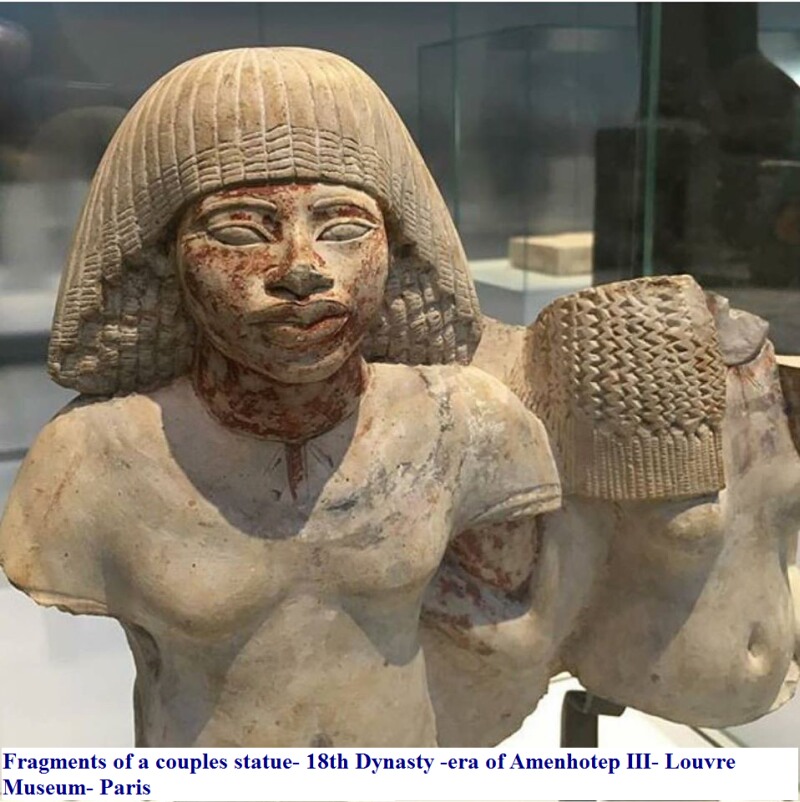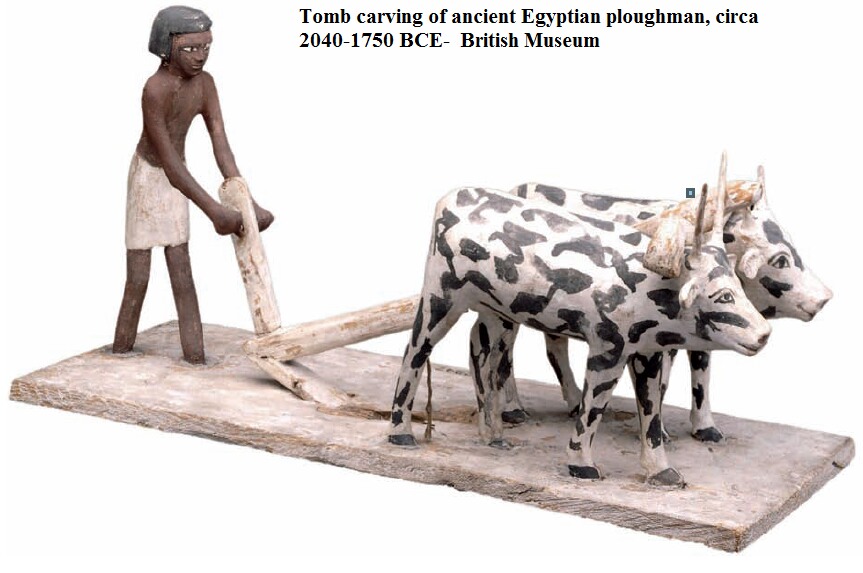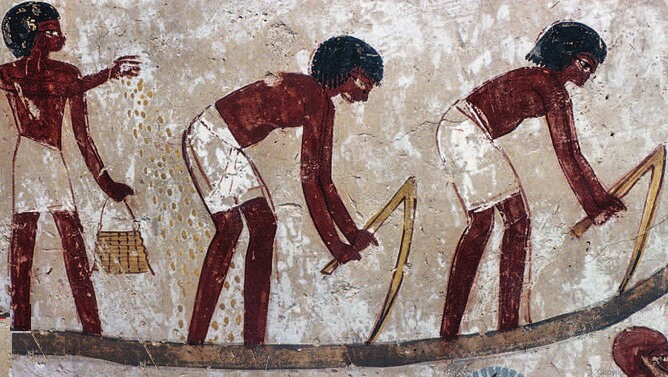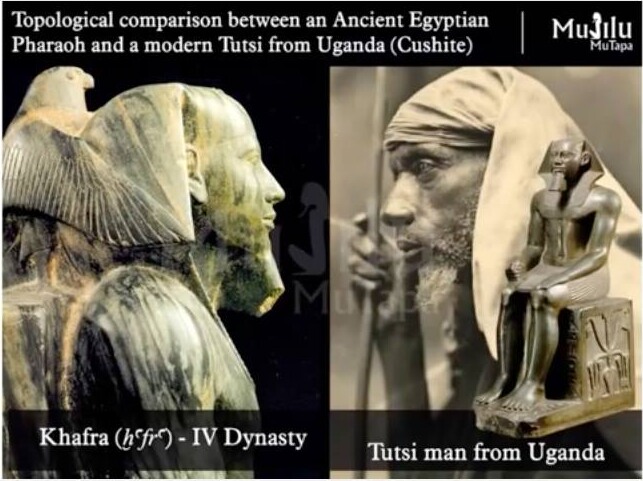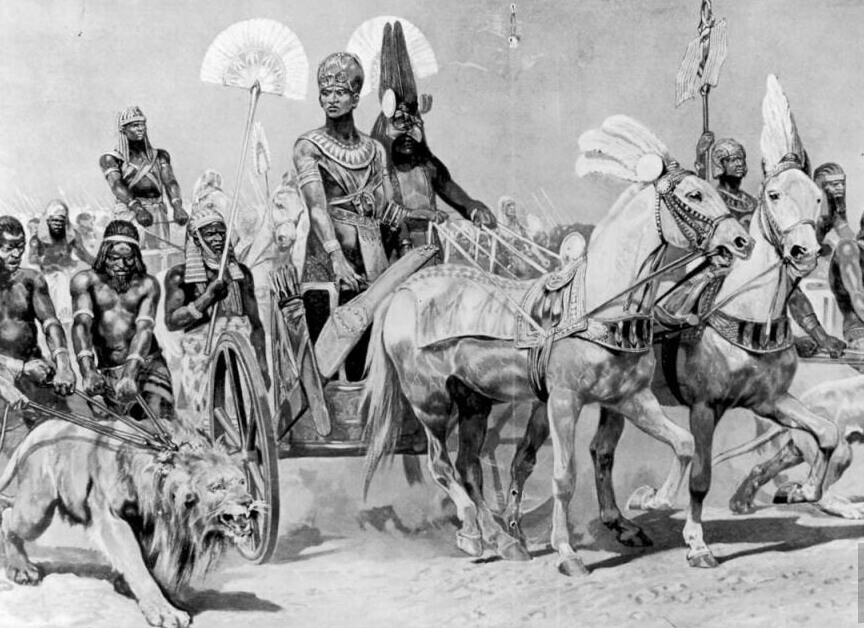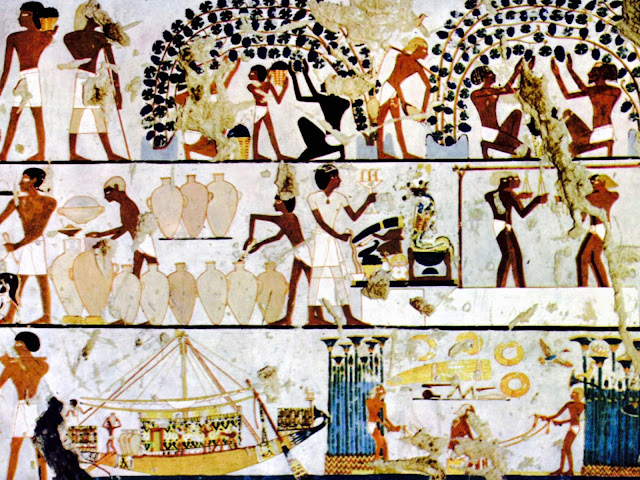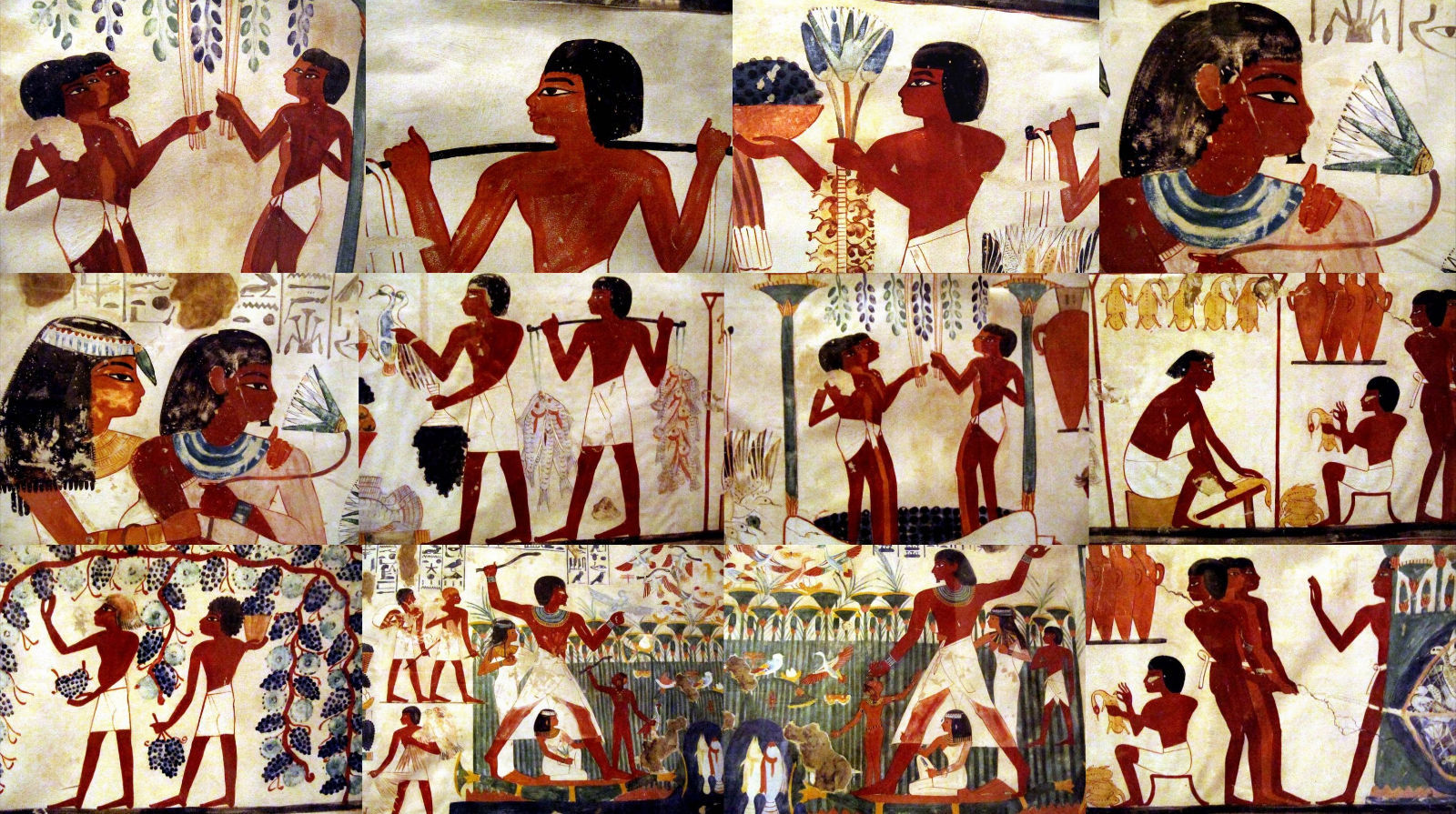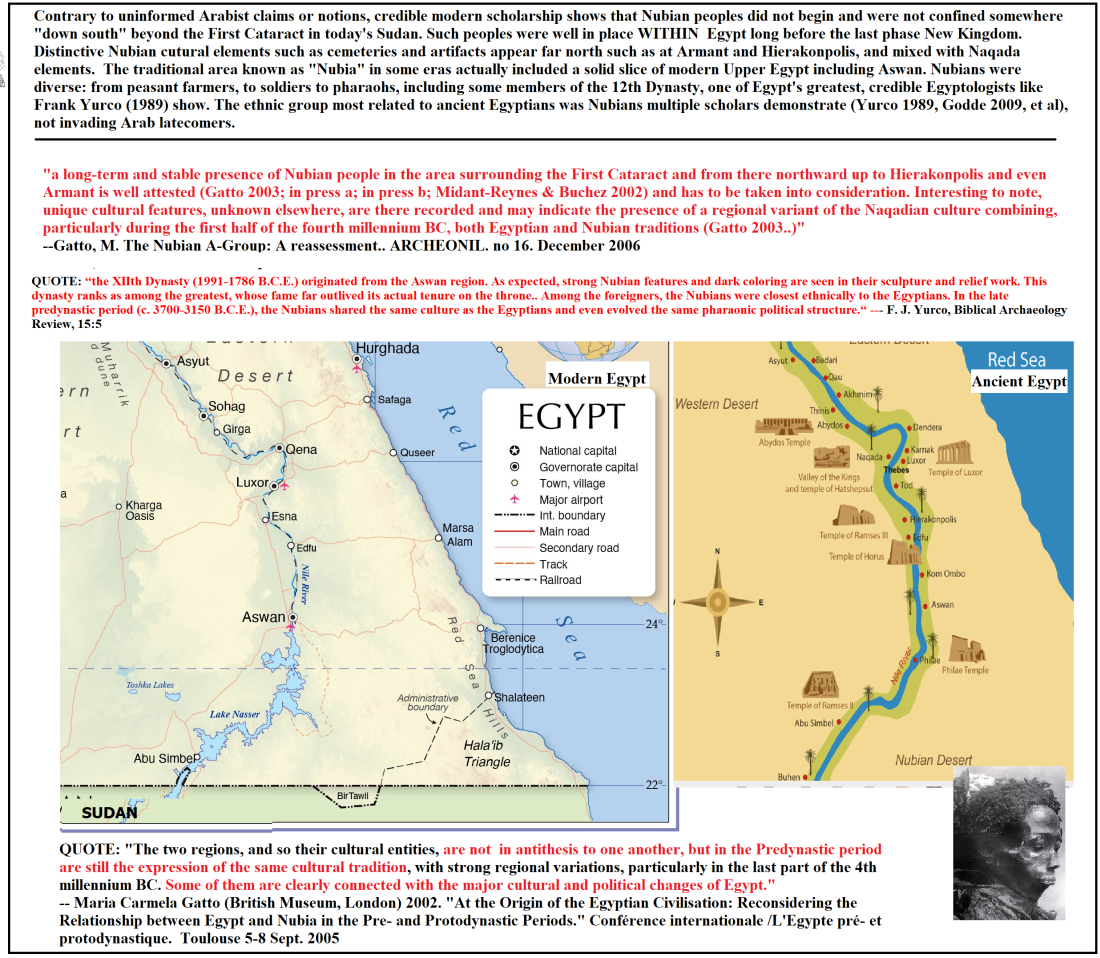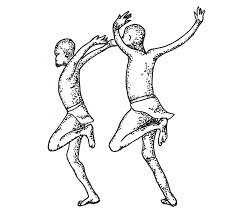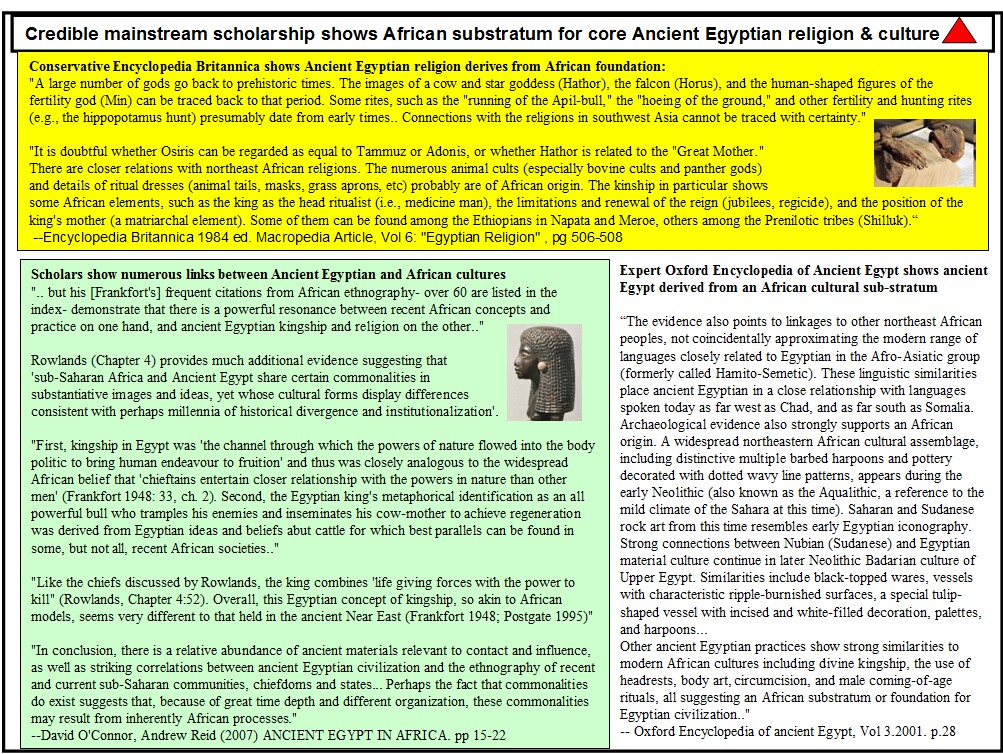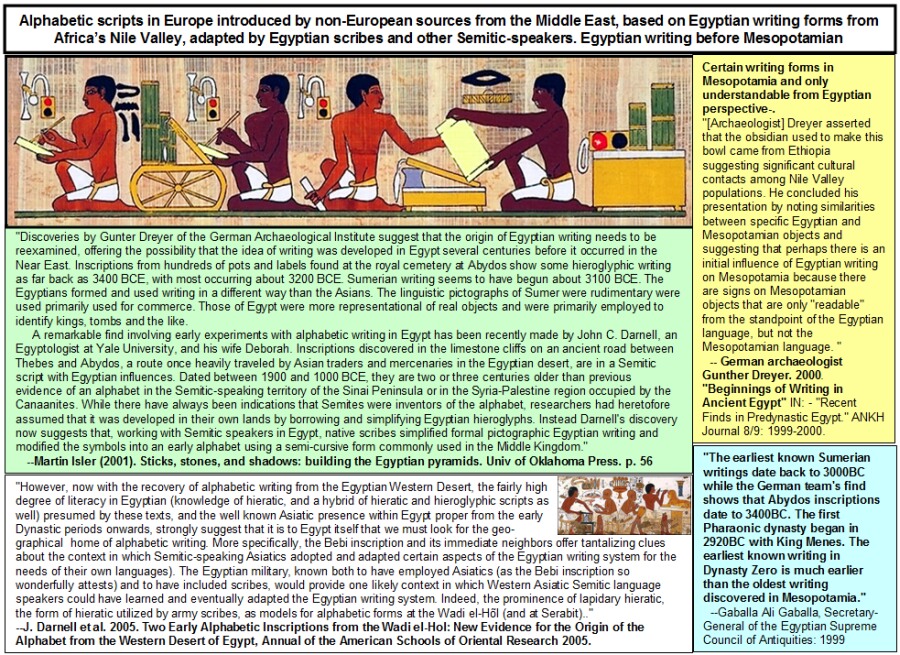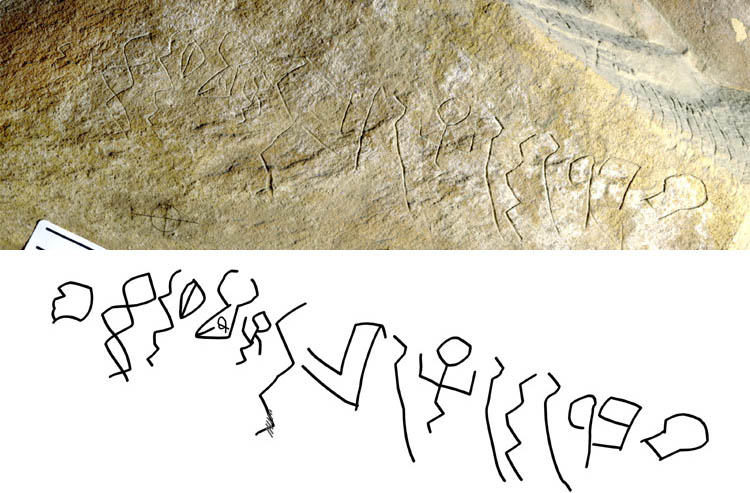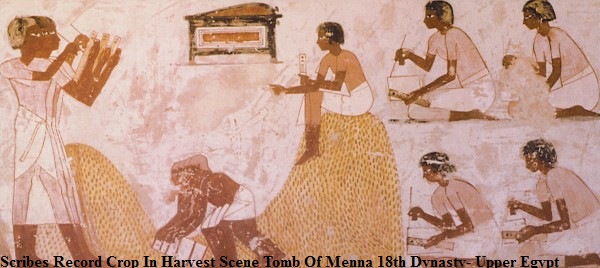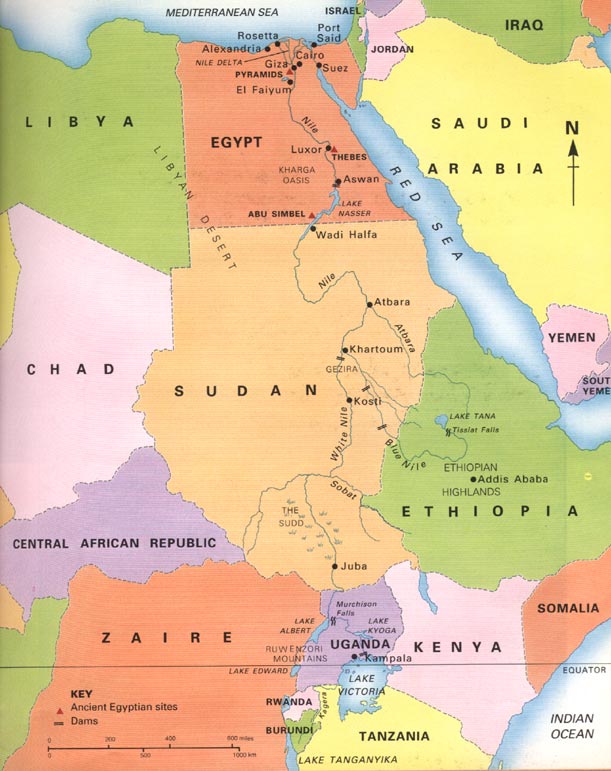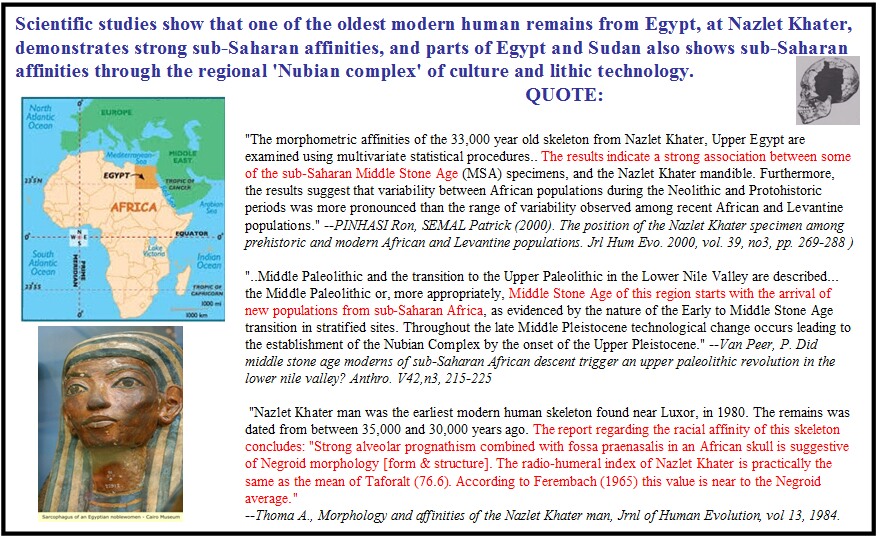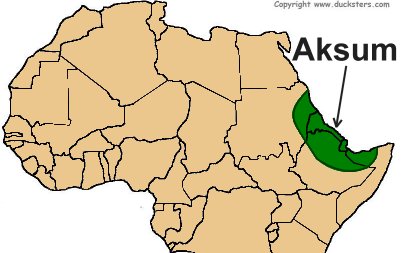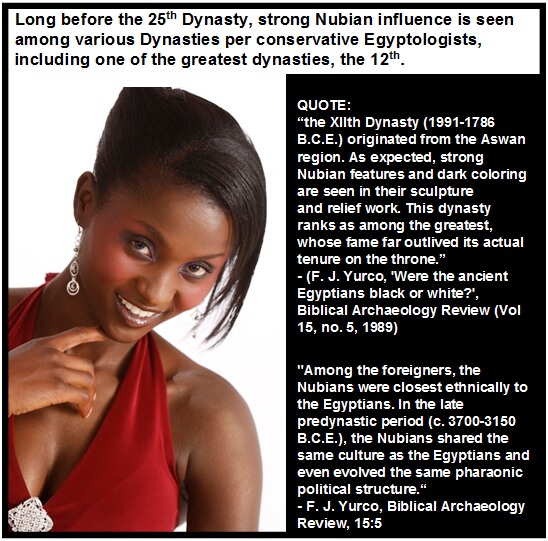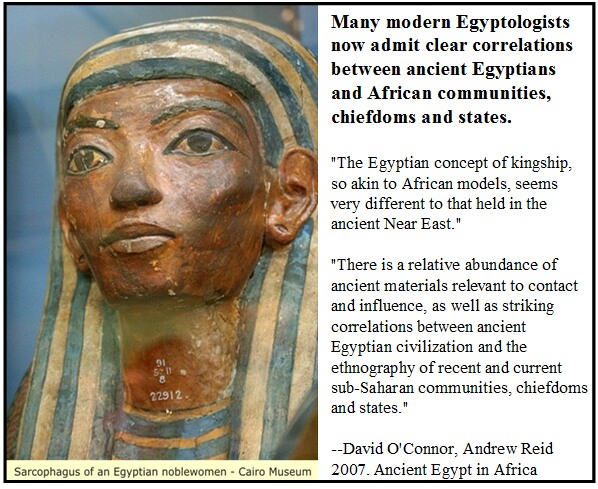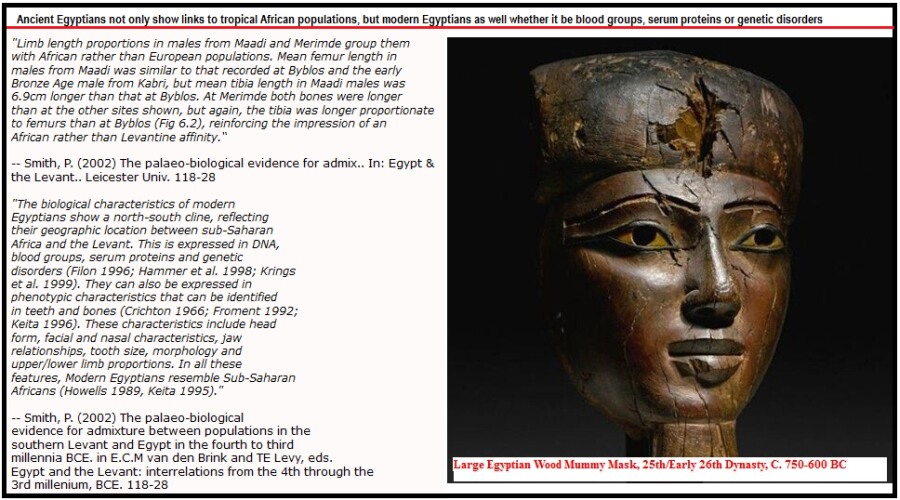Post by zarahan on Jul 29, 2016 20:14:51 GMT -5
African and Nile Valley Diversity Gallery - 1[/b
egyptsearchreloaded.proboards.com/post/14787
Gallery of modern Egyptians
egyptsearchreloaded.proboards.com/thread/3488/black-egyptian-diversity-picture-gallery
Scholar Jablonski on skin color diversity in Africa - She notes that Africans have
the most skin color diversity :- quote
"more genetic diversity than all the rest of the world's people put together. This diversity is also reflected in skin pigmentation. Africans are not uniform or uniformly dark in their skin color. High levels of skin color diversity exist between different populations and also within most sub-Saharan African groups.6 This variation illustrates the complex interactions of evolutionary forces that contribute to patterns of variation in skin color at any point in time."
--N. Jablonski 2012. Living Color: The Biological and Social Meaning of Skin Color
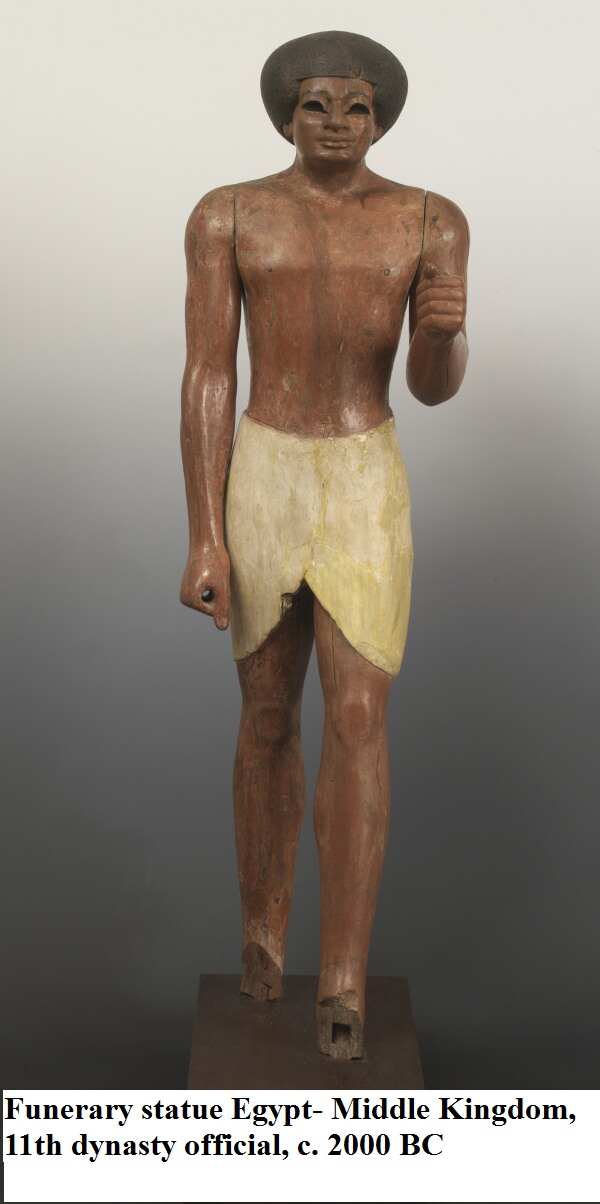

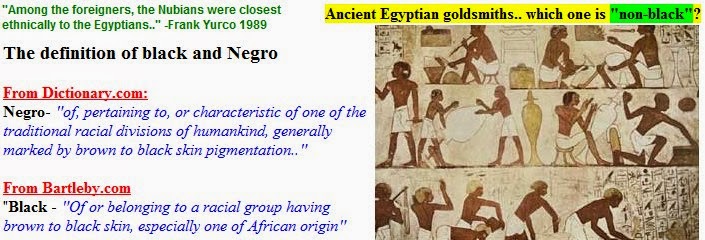
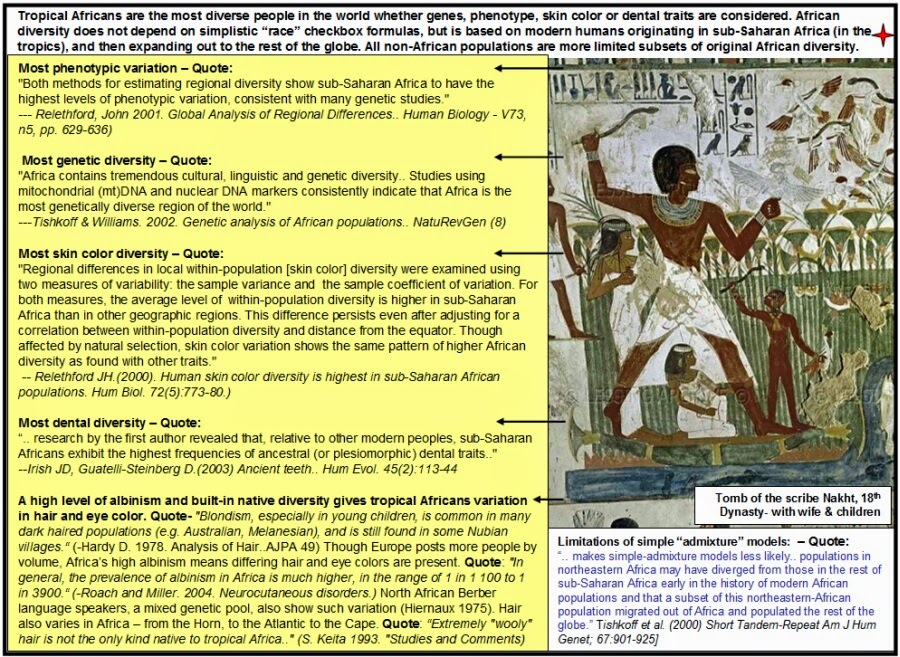

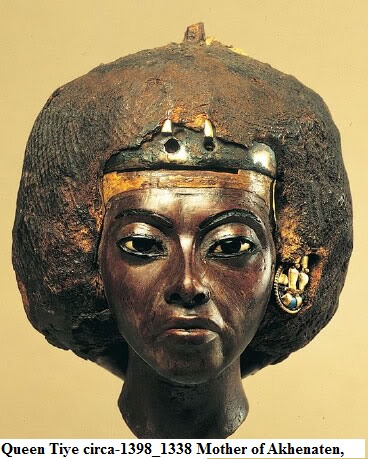


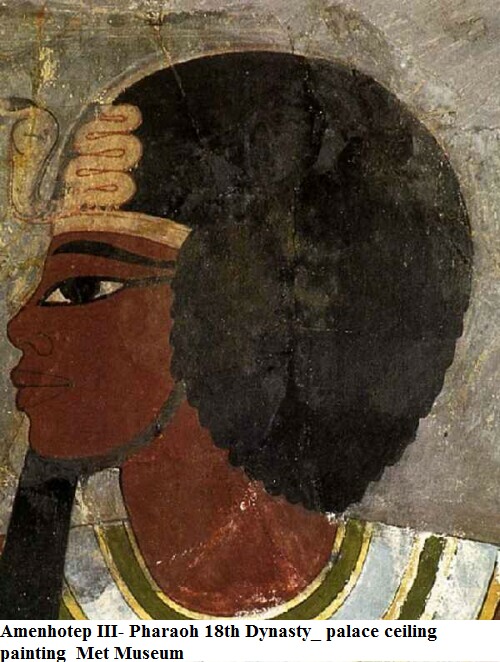



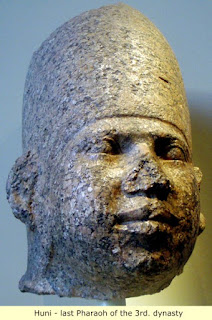



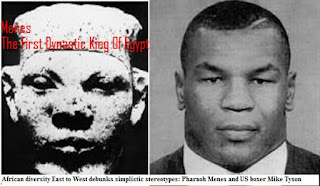




![]() 4.bp.blogspot.com/-_VkSzsOzJmA/WCKnecFuzbI/AAAAAAAACwY/Kbs1IEZvvcIh5j-
4.bp.blogspot.com/-_VkSzsOzJmA/WCKnecFuzbI/AAAAAAAACwY/Kbs1IEZvvcIh5j-
4lBmJp79m0FmosURQgCLcB/s1600/begy_man_surveyingfields_nebamun_18thdynasty.jpg[/img]








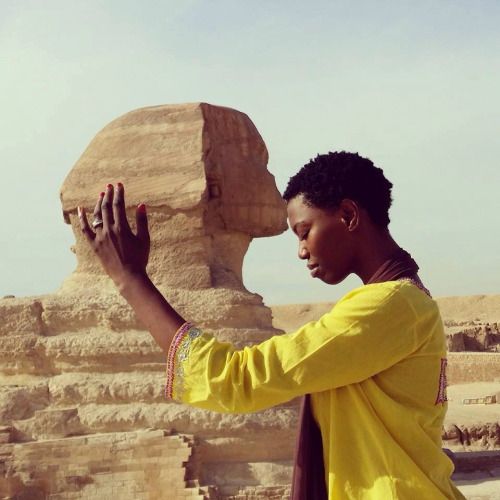





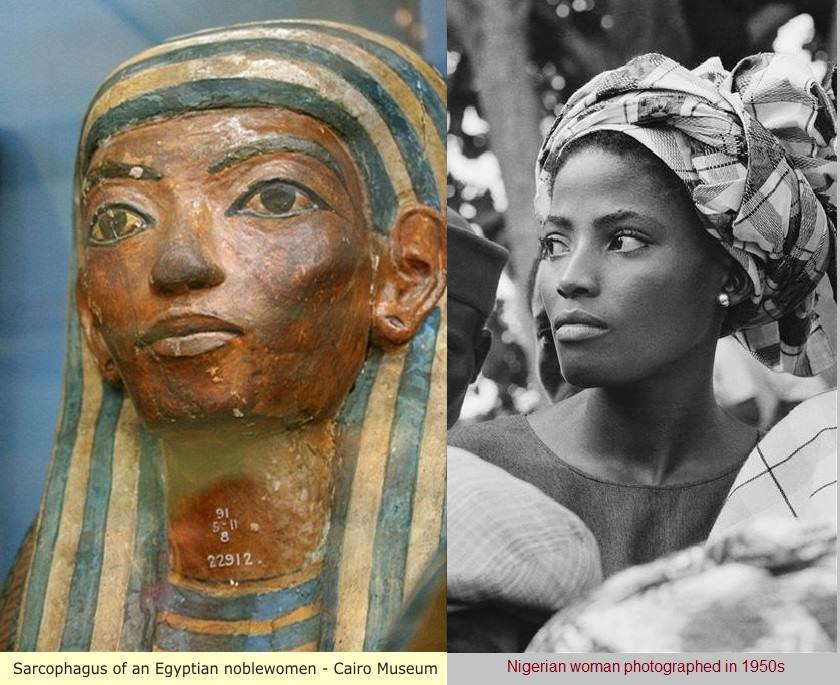
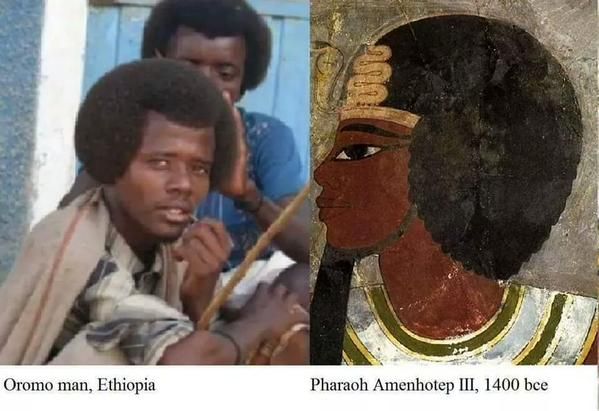

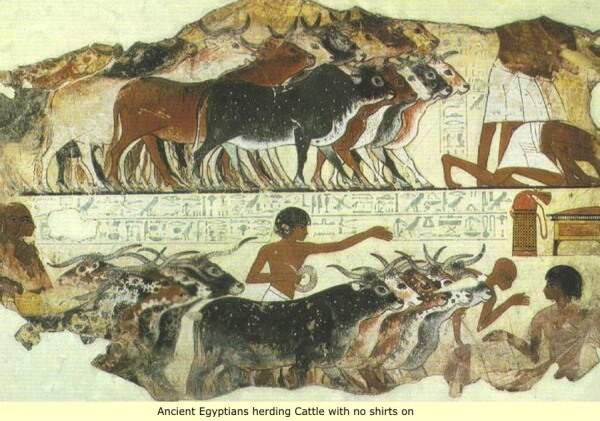
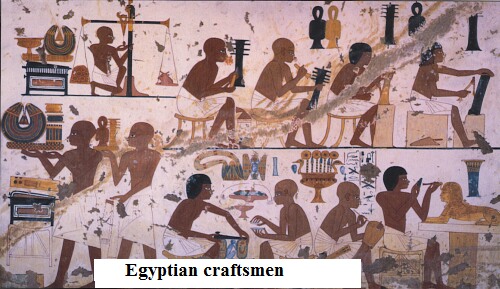


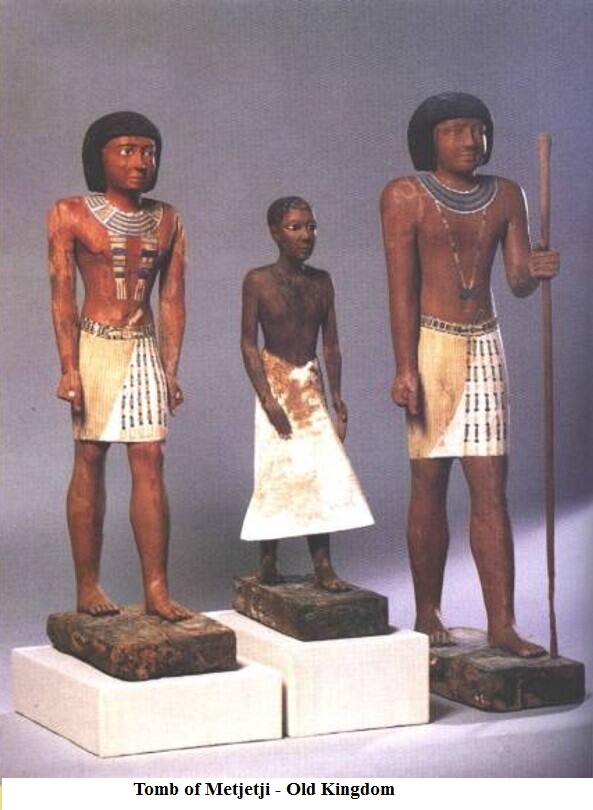

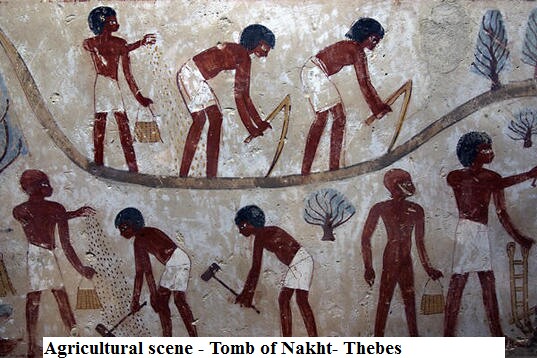
---------------------------------------------------------------------------------------------------

---------------------------------------------------------------------------------------------------
Note:
"Negroid" or "black" includes people with not only broad noses and full lips
BUT ALSO people with narrow noses, thin lips and loose/wavy hair, AND
light brown skin. They are all "negroid" variants, and do not need any "race mix"
to explain why. Africans are the most diverse phenotypically. The term "tropical
African" or Africoid gives a better picture of diversity than older outdated terms, and said
Africans can be NON sub-Saharan/Supra-Saharan or "sub-Saharan." They are not static people
huddled behind any "sub-Saharan" or climate barrier, they can live in the tropic zone
and OUTSIDE the tropic zone. That is the diversity of Africa and Africans.
egyptsearchreloaded.proboards.com/post/14787
Gallery of modern Egyptians
egyptsearchreloaded.proboards.com/thread/3488/black-egyptian-diversity-picture-gallery
Scholar Jablonski on skin color diversity in Africa - She notes that Africans have
the most skin color diversity :- quote
"more genetic diversity than all the rest of the world's people put together. This diversity is also reflected in skin pigmentation. Africans are not uniform or uniformly dark in their skin color. High levels of skin color diversity exist between different populations and also within most sub-Saharan African groups.6 This variation illustrates the complex interactions of evolutionary forces that contribute to patterns of variation in skin color at any point in time."
--N. Jablonski 2012. Living Color: The Biological and Social Meaning of Skin Color





















4lBmJp79m0FmosURQgCLcB/s1600/begy_man_surveyingfields_nebamun_18thdynasty.jpg[/img]
























---------------------------------------------------------------------------------------------------

---------------------------------------------------------------------------------------------------
Note:
"Negroid" or "black" includes people with not only broad noses and full lips
BUT ALSO people with narrow noses, thin lips and loose/wavy hair, AND
light brown skin. They are all "negroid" variants, and do not need any "race mix"
to explain why. Africans are the most diverse phenotypically. The term "tropical
African" or Africoid gives a better picture of diversity than older outdated terms, and said
Africans can be NON sub-Saharan/Supra-Saharan or "sub-Saharan." They are not static people
huddled behind any "sub-Saharan" or climate barrier, they can live in the tropic zone
and OUTSIDE the tropic zone. That is the diversity of Africa and Africans.

